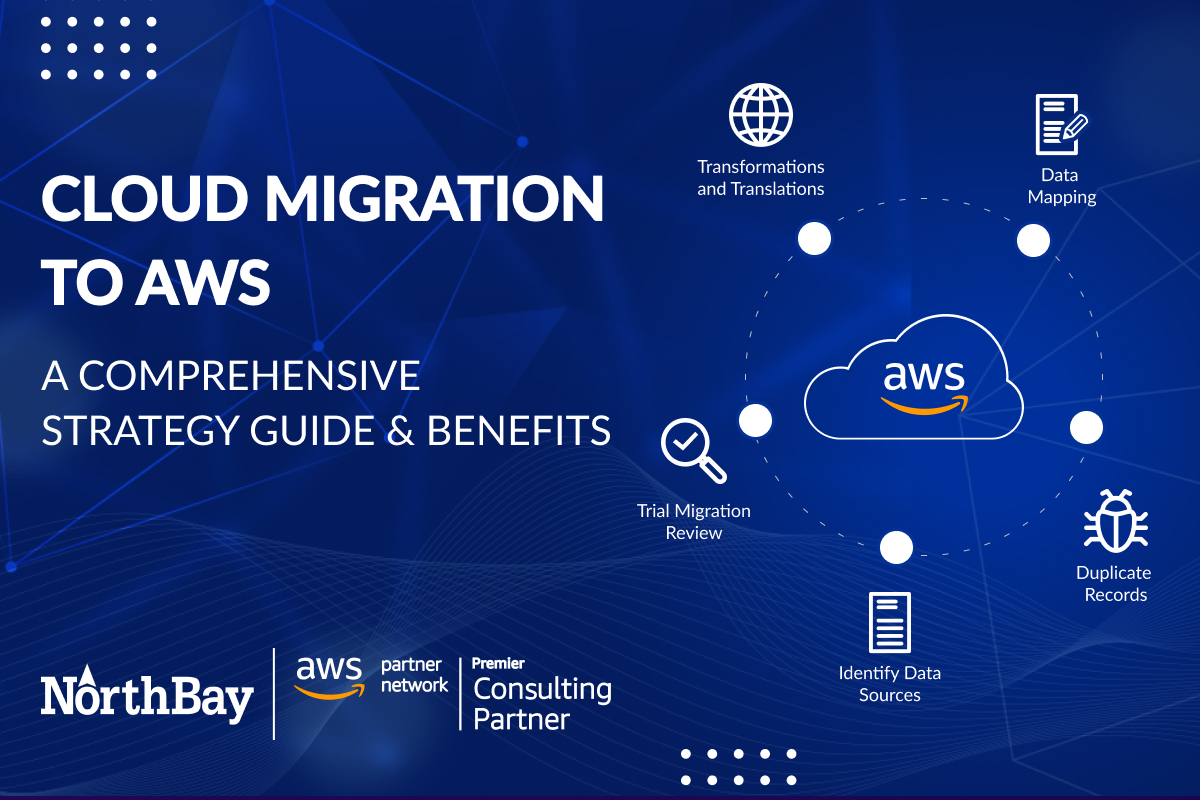
Cloud migration strategy refers to the systematic approach and plan that an organization follows when transitioning its IT infrastructure and applications from on-premises or traditional hosting environments to the cloud. Understanding the intricacies of cloud migration to AWS is crucial for guiding businesses toward success. The actual goal of a cloud migration strategy is to ensure a smooth and efficient transition to the cloud while maximizing the benefits and minimizing risks. Let’s discuss the key aspects of cloud migration strategy.
Cloud Migration Strategy
Identify Data Sources:
Begin by identifying all the data sources in your existing on-premises infrastructure. This includes databases, applications, and any other data repositories.
Data Mapping:
Create a comprehensive data map that outlines the source, destination, format, and dependencies of each data source. This map will be critical for understanding the complexity of your migration.
Duplicate Records:
Identify and handle duplicate records or data discrepancies in your source systems. Ensure data integrity before migrating, and decide how to deduplicate or merge data as needed.
Transformations and Translations:
Examine the data sources for any transformations or translations that are specific to your existing infrastructure. Make sure these are addressed during migration to maintain data consistency.
Trial Migration Review:
Before the full migration, perform a trial migration with a smaller dataset to validate the process and identify any issues that may arise. This allows you to fine-tune your migration strategy.
Monitoring and Optimization:
Continuously monitor your migrated data and optimize performance as needed. AWS provides tools and services for ongoing data management and optimization.
Disaster Recovery and Backup:
Implement robust disaster recovery and backup plans to ensure data resilience in the cloud. AWS offers services like AWS Backup for this purpose.
By following this AWS cloud migration strategy, you can ensure a smooth and successful migration of your data to the AWS cloud while maintaining data integrity and security throughout the process.
Benefits of Cloud Migration to AWS
There are several benefits of migrating to the AWS (Amazon Web Services) cloud. Here are some key advantages:
Cloud migrating to AWS offers organizations numerous benefits that can empower them to scale, optimize costs, improve security, and innovate more efficiently. However, each organization's cloud migration experience may vary, and it's essential to analyze specific business requirements to fully leverage the advantages of AWS.
Final Thoughts
Successful cloud migration requires careful planning and a well-defined strategy. By comprehensively assessing your current environment, choosing the right cloud service model and provider, defining a data migration strategy, ensuring security and compliance, and planning for continuous optimization, you can achieve a successful cloud migration that unlocks the full potential of the cloud for your organization. Embrace the possibilities that cloud computing offers and position your business for remarkable growth and innovation. Remember, every successful cloud migration begins with meticulous planning and a strategic mindset. Stay informed, adapt to change, and keep the focus on your organization's long-term goals. Connect with NorthBay Solutions (AWS Premier Consulting Partner) today to escalate the growth of your business!





